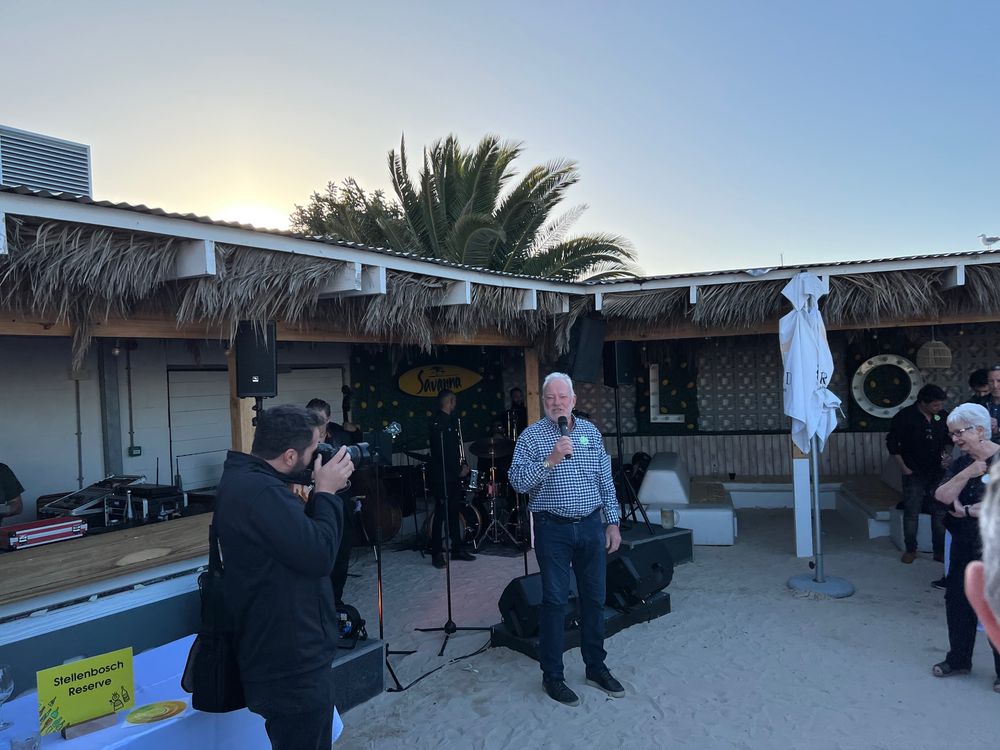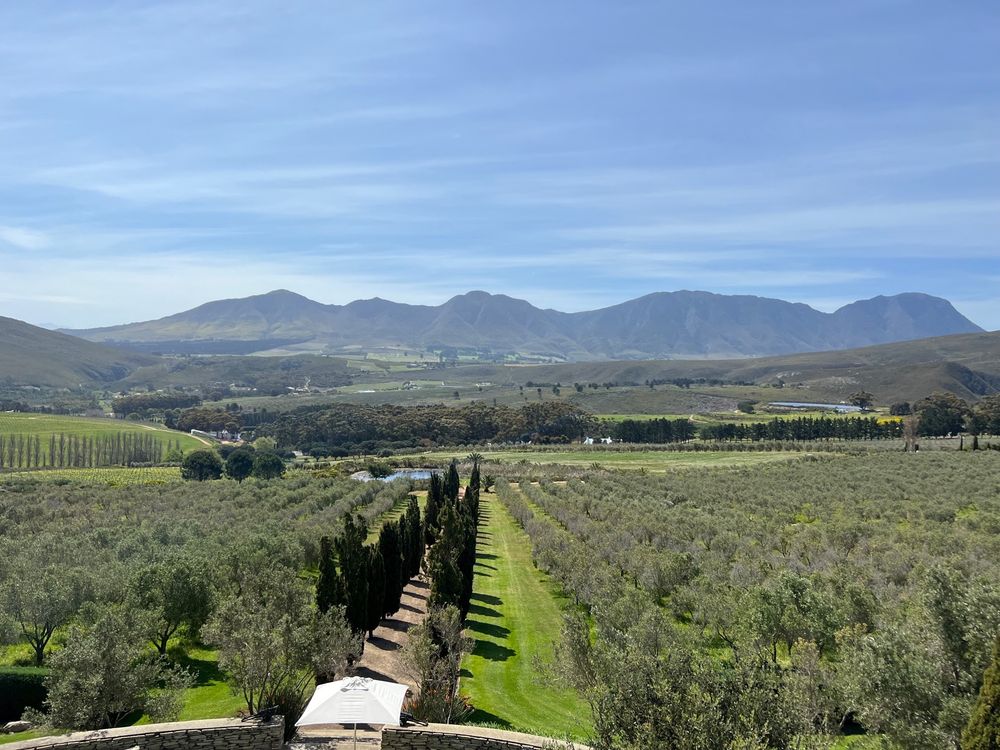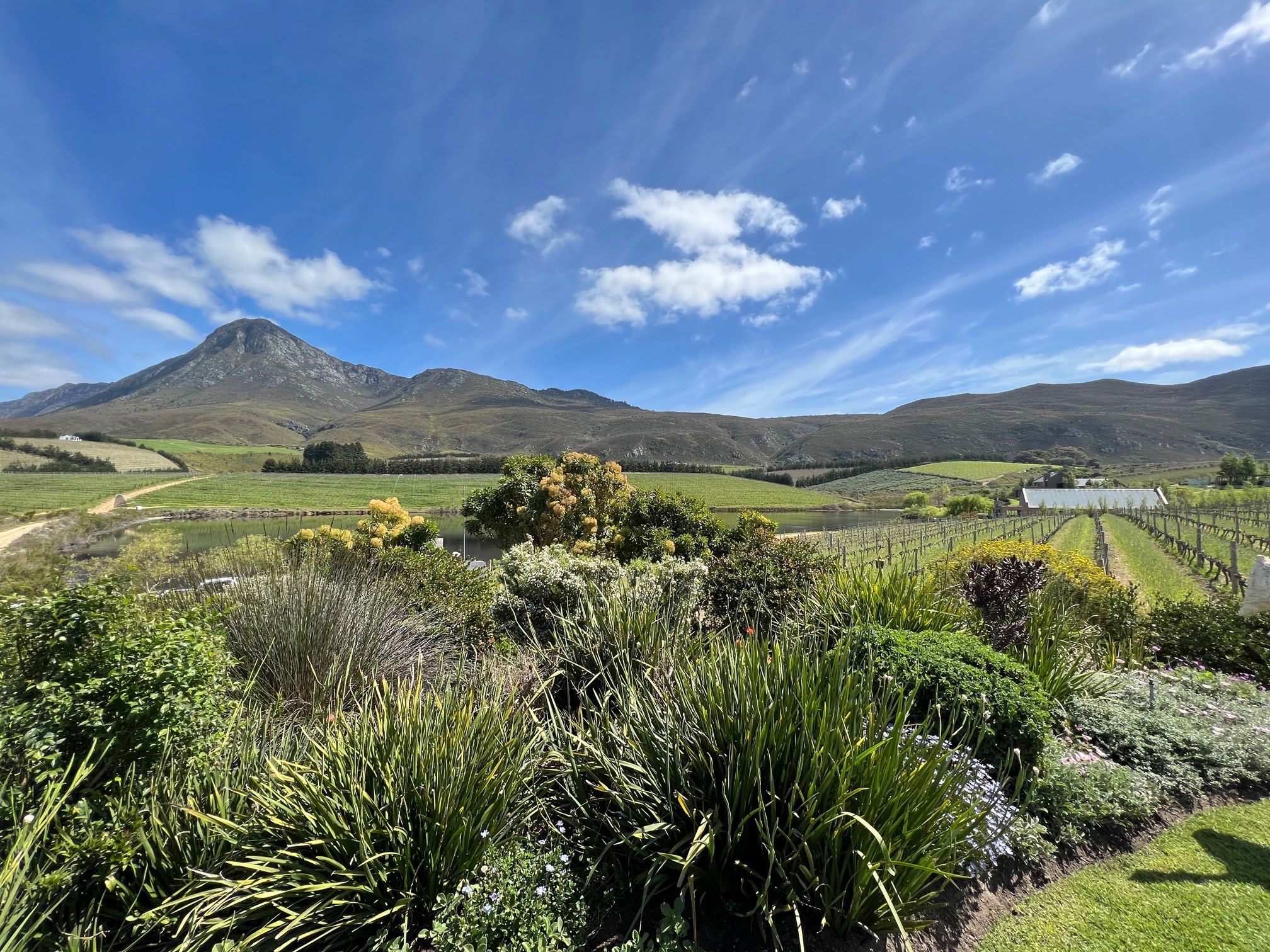International buyers and importers descended on South Africa earlier this month for the Cape Wine trade fair. But there was so much more to see, discover and understand outside the trading floor, reports Richard Siddle.
It is in our human nature to seek out the new, exciting and shiny and want to spend our time hanging out in the most hip places, with the coolest people, eating and drinking what’s deemed to be the best food and booze in town.
That was very much the case for the international wine trade that visited South Africa this month for the Cape Wine trade fair as there was just so much new and exciting wines, winemakers and producers to discover and explore. For many it was their first visit to the country since Covid-19, or the last Cape Wine in 2018.
A whole lot has changed since then. In fact it’s no over exaggeration to say South Africa has gone through a mini revolution in the last four years in terms of how quickly its wine industry, and the quality of its wines, have increased dramatically. Not that they weren’t very good before. In fact, they were already widely recognised as producing some of the best quality, best value wines in the world.

South Africa has raised the bar of its wines even higher since the last Cape Wine in 2018
It’s just that the bar has been raised even higher with consistency and quality everywhere you look. One of the stand out comments at this year’s Cape Wine came from highly respected US wine journalist, Alder Yarrow, who tweeted: “There is no more exciting wine region in the world right now than South Africa. The hundreds of wines I’ve tasted in the last five days have blown my mind.”
Strong foundations
Whilst much of that praise is being heaped, quite rightly in most cases, on the new generation of winemakers who have been front and centre of the South African wine revolution, prepared to seek out new sites and work increasingly with old vines and long neglected grape varieties to bring new life to many parts of the country’s wine regions. Their success, though, would not have been possible without the strong foundations that their predecessors have long put in place.
They may not have the beards, tattoos and surf boards of the younger brigade, but it is their know how, expertise, resilience and collective long term visions that are now providing the platform for the younger generation to shine.
South Africa would not be in the strong position it is today without the impact and influence that the likes of Ken Forrester, Beyers Truter, Arbie Beeslaar, Graham Beck, Pieter Ferreira, the Jordans, and so many more, have had, setting the standards and benchmarks for future generations to live up to, and potentially raise higher.

Ken Forrester remains one of South Africa’s most influential winemakers and voices helping to set the standards for the country’s wines
Their experience and leadership is still very much at the heart of the new South Africa. Acting, if you like, as parental figures sitting a little quieter in the background as the new, slightly brasher, more confident generation strut their stuff. Both camps were to the fore, in their own inimitable ways, at this month’s Cape Wine.
The connection, and closeness, though, between the two generations is key to South Africa’s current success. They may not share too many braiis together, but they will happily work together, sharing advice, and pointing each other to the right vines that work for their wines. Just look at the number of established producers that are quite happy for their younger winemakers to go off and do satellite projects, to test, trial and experiment and bring back ideas to their farm.
The collaboration in South Africa has to be seen to be believed, both between individual growers and producers. But also how organisations such as the Old Vine Project, Chenin Blanc Association, Stellenbosch Cabernet Collective, the Pinotage Association, or PIWOSA provide the platforms and opportunity for winemakers from all backgrounds and generations to come together on a united front to learn from each other and promote their wines together.

The buzz around the Zoo Biscuits stand throughout Cape Wine shows how exciting South Africa’s new generation of winemakers are
Event after event in the build up to Cape Wine saw a number of large winemaker tastings take place, centred around the above themes. A chance to meet a wide range of producers, both big and small, who are all working together to raise the profile of Brand South Africa.
It is hard to think of another wine country that has quite the level of togetherness and team spirit.
Bulk conundrum
There is also, though, another vital part of the South African wine industry that was largely hidden away from the buzz of the exhibition floor at Cape Wine. The bulk wine industry that, whisper it quietly, essentially sets the tone for how the rest of the industry performs and what prices international buyers and importers expect to pay for their wines – at all levels.
The quality and volume of South Africa’s wine harvest ultimately dictates the prices that the bulk producers and brokers can charge, both domestically, but crucially overseas. Prices that have a knock-on effect to what the more premium, mainstream producers can then justifiably charge and negotiate with their international customers.

Sluth Africa’s vast vineyard areas produce huge quantities of wine that can have an impact on the base prices that can be charged for them
For all the talk of sense of place in South African wines, a huge number of its wines, even at the premium prices, will have percentages of bulk wine in them. The bulk wine producing areas are the beating heart of the country’s wine industry, acting like its blood system if you like, providing the necessary amounts of wine to help producers across the country make the wines they want.
The reason so many South African producers at all price levels want to access the country’s bulk wine sector is the quality of the fruit, and the price they can get for it.
But that also throws up a stack of problems too. For it is also the same reason why so many global wine buyers were so quick to get on the plane to go to Cape Wine. They too want to take advantage of South Africa’s cheap bulk and mainstream wine market.
The 2021 figures from SAWIS shows the vast majority of the bulk wine being exported from South Africa is at less than ZAR19.99 (£0.95) per litre – some 236.4m litres (up 37% in volume on the year before) out of a total 242.6m litres for bulk wine exports (up 33%). That compares to the 145.6m litres exported for packaged exports.
But the UK shows that if more buyers can be convinced to trade up then the returns are there to be had. In 2021, for example, the 14% increase in bulk wine exports to 59.5m litres was worth ZAR574m. Yet the 33.1m litres the UK imported as packaged goods (up 10%) generated nearly four times more at ZAR1.9bn (up 25%).
Whilst South Africa’s total bulk exports were worth ZAR2.4bn in 2021 – from 242.6m litres – they were worth ZAR7.8bn for its bottled wine on the back of 145.6m litres.
It’s hard to get buyers to pay more for your non bulk and premium wines if your bulk wine price is too low. It is what sets the parameters, the levels at which buyers are prepared to go and negotiate from.
Trading tensions

There was a huge buzz at this year’s Cape Wine 2022 with buyers from all over the world looking for producers to work and new wines to buy but there were also tensions over the prices they were prepared to pay for them
It was an issue that was being played out on the trading floor at Cape Wine. Frustration amongst some producers that buyers were coming to the show still very much regarding South Africa as a country to access and find cheap, good quality wine.
Yes, they might universally agree the quality of wine has been raised quite a few notches, they are not always prepared to see the price for those wines follow suit. Particularly at a time when they are coming from countries facing big rises in energy bills, increase in interest rates, and on-going supply chain, packaging and logistics challenges.
It’s an uncomfortable balancing act with plus and minuses on both sides. But if things are to change the next step for South Africa is to work together not just on the quality of its wines, but the prices they are willing to accept for them.
It also needs producers to take a deep breath and accept higher domestic bulk wine prices that allows them to pitch for higher prices from their international suppliers. The South African wine industry needs to raise its own bottom line if international prices are to follow suit.
Time for change

South African wine commentator and consultant Emile Joubert leads a tasting at Creation Wines during the pre Cape Wine events designed to show international buyers and journalists what is going on in the country
It also needs a change in how some buyers look at South Africa and what they expect to get when they go there. Many will have flown in just for the show and agreed prices, rates and contracts based purely on the wines being put in front of them – and flown straight out again.
But South Africa is so much more than just its wine.That’s just the icing on the cake. The bottles you can see on the shelf. There are few producers purely focused on their grapes, vines, tanks and sales. No, they are working with their local communities helping to fund and drive social empowerment projects and initiatives with their workers and their families. Looking to play their part in a building a sustainable future for everyone in this beguiling country.
They may not be the immediate problems of the buyers visiting wanting to buy wine at price points they feel their customers back home can afford and are willing to pay. But they are paying South Africa a disservice if they do not recognise, appreciate and reflect on the fact that this is a wine producing country like no other. Where you are investing in a country and the local community where the wine comes from and not just buying pallets and cases of wines. Being prepared to pay just a bit more per bottle can have an enormous impact on a country where just by visiting you are helping to create jobs.
There are many places in the world to source cheap, large volumes of bulk wine, but South Africa should not be one of them.
- This is an edited and extended version of an article that first appeared on VINEX – the bulk and bottle trading wine site.
































